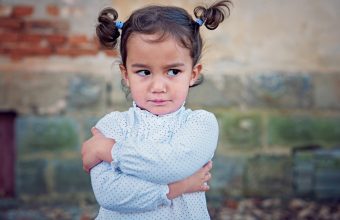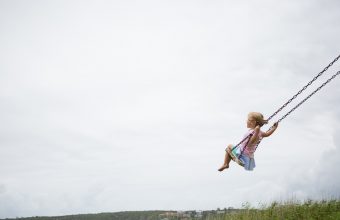When our four year-old-son held his own toddler-scribbled home-made sign and loudly chanted “Black Lives Matter” during our town’s peaceful march for racial equality, my Mama heart both burst with pride and shattered into a million pieces at the same time because his little soul needed to protest for his right to be treated equally simply because of the colour of his skin.
At his tender age, he already knows that he’s “Blasian” because Daddy is Black and Mommy is Asian, and books like Chocolate Me by Taye Diggs and We’re Different We’re the Same from Sesame Street are in regular rotation during bedtime stories. Little did we know that he would have participated in two Black Lives Matter marches before he even starts Junior Kindergarten. This is the reality for our family and for all those raising children of colour in this new age of awareness.
I won’t pretend like I know what the answer is, and I certainly won’t forget that our son will have his own innate wisdom and capability for guiding himself, but being conscious of my own role to prepare him as much as possible for growing up in this world, I will do everything in my power to be an active participant in solidifying his sense of self, cultivating his self-leadership skills and sharpening his world view so that he can create the world we want to live in.
Here are things we are focusing on:
Developing a positive and strong sense of self – Like all young children, helping them learn to embrace and process emotions, especially difficult ones, is important in showing them that they are heard, loved, and valued for all that they are. Many children of colour will hear over and over in their lifetimes that they are not worthy and not good enough, so it is a top priority to make sure that we build a strong foundation of self-love by holding space for him, especially during emotionally challenging times, to learn that he is always heard and seen by us and is completely valued. Then to learn how to process and channel his feelings in positive ways. This will be the core of how he views and holds himself as he interacts with the world.
Building a self-leadership mindset – For those who have been systematically oppressed for long periods of time, it’s not uncommon to have a “victim mentality” and operate from a place of defence as an underdog throughout life. As our son is starting his, I want to instill in him that he has absolute power over how he thinks and how he chooses his words and actions. At age four, he knows that his most powerful tool is his mind and that when he’s feeling frustrated or angry, he can take some time and some deep breaths, and choose a different feeling. We practice a lot on asking for what he needs instead of whining. When we go for trail walks, I’ll often say “Ok, you lead the way” and when we come to a fork in the road, “You’re the leader. Which way would you like to choose?” I am constantly giving him positive validation of his critical thinking by offering responses like “Great observation!”, “I love the way you think”, and “That’s a smart choice, I’m so proud of you!”
We cannot control how others will treat him as he gets older, but we can focus on raising a young man who is confident and assured of the way he leads himself in the crowd, and in return, command respect and affirmation for the way he holds and communicates himself.
Being proud of his own heritage and loving the world – A survey conducted by the Public Religion Research Institute in 2013 found that 75% of white Americans only had white people in their social circle. Statistics like this act as a big motivator for us to ensure that we surround our family with diverse friends and multiculturalism to expand our world view. In addition to being immersed in books that celebrate our son’s skin colour and promote diversity, we are intentional about exposing him to his own cultures so that he can know where he comes from and to feel like he belongs. We go to Chinese New Year celebrations at the Buddhist temple in Toronto and aim to take regular trips to visit family in Barbados and Taiwan. Equally as important, we make sure that he has friends from various ethnic backgrounds, playing with his friends next door from India, going with Daddy to his barber who is Jamaican, and enjoying Middle Eastern food with our Syrian neighbours.
Being a mixed-race child, he is a bridge between skin colours and cultures, and a life rich in racial diversity will help him share and teach respect and love for all cultures.
Actively participating in social change – Growing up in Taiwan, I remember attending peace rallies with my parents for democracy. It was a natural part of growing up, learning to take action to share our voice for positive social change. I want to teach our son that he is a citizen of the world and that he plays a role as a changemaker instead of sitting on the sidelines. Even though he is young, we can teach him about current events in a language that he understands. Our children are wise souls with a deep inner understanding of life’s truths; it’s our job as parents to guide them as they navigate their place in society, and choose an active role in creating their world.
Race relations are human relations. Regardless of what skin colour we were assigned, we have the responsibility of expanding our children’s sense of humanity. This new age of awareness is heading for peace, love, and strength in unity and harmony.
Let our kids lead the much-needed change we want to see.
Tagged under: Parenting,Family life,mom 101,Black Lives Matter
Category: parenting






